|
|
|
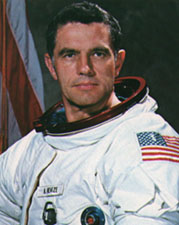 |
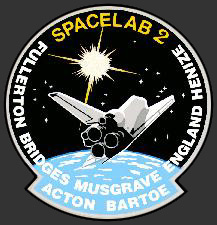 |
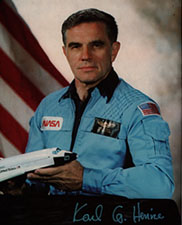 |
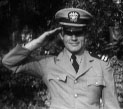 America's entry into World
War II ended the depression, and Wilson volunteered for submarine duty in the
Pacific. Karl elected to not finish high school, instead entering the
Navy's V-12 program, which first took him the Dennison University in Cincinnati,
and then to the University of Virginia. The cave systems of that region of the
country introduced him to the sport of spelunking. His daring in this
earned him the nickname "Monk" (short for monkey). World War II ended
before he received his Naval Commission, so he became a member of the Naval
Reserve, reaching the rank of Lieutenant Commander and retained a draft status
of A1 until being required to give that up when he became an Astronaut 1967.
America's entry into World
War II ended the depression, and Wilson volunteered for submarine duty in the
Pacific. Karl elected to not finish high school, instead entering the
Navy's V-12 program, which first took him the Dennison University in Cincinnati,
and then to the University of Virginia. The cave systems of that region of the
country introduced him to the sport of spelunking. His daring in this
earned him the nickname "Monk" (short for monkey). World War II ended
before he received his Naval Commission, so he became a member of the Naval
Reserve, reaching the rank of Lieutenant Commander and retained a draft status
of A1 until being required to give that up when he became an Astronaut 1967.
After receiving a Masters degree in Mathematics from the University of Virginia, Karl went to South Africa as an employee of the University of Michigan to do a survey of the Southern sky. This endeavor took some three years, and Karl worked, played rugby, organized a small baseball league, made friends, explored, hiked and generally had a good time. On his return home he became a candidate for a Ph.D. at the University of Michigan, and his survey plates of the southern sky became his thesis and much of his life's work after.
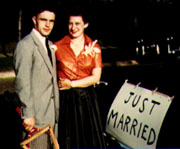 Karl met his future wife
at Michigan in the summer of 1952. They married in 1953 and a year later
set off for California for a post doctorate position at Mount Wilson Observatory
in Pasadena. Jobs were scarce in Astronomy and it looked for a while as if
Karl was going to have to go to work for IBM. Son Kurt was born in
Pasadena, California in 1955. An opportunity for a position for the
18-month geophysical year appeared, so Karl and family left for Cambridge,
Massachusetts, and the Smithsonian Observatory. Karl's South African
experience set him up as the man to pick sites around the world to set up
Baker-Nunn satellite tracking cameras. There were, of course, no
satellites to track yet, but setting this system up quickly was a
priority. Cambridge was the site of the next addition to the family,
daughter Marcia, born October 3, 1956. On Marcia's first birthday, Sputnik
was launched by the Soviets, and it became clear why there was such a rush on
getting the tracking telescopes placed.
Karl met his future wife
at Michigan in the summer of 1952. They married in 1953 and a year later
set off for California for a post doctorate position at Mount Wilson Observatory
in Pasadena. Jobs were scarce in Astronomy and it looked for a while as if
Karl was going to have to go to work for IBM. Son Kurt was born in
Pasadena, California in 1955. An opportunity for a position for the
18-month geophysical year appeared, so Karl and family left for Cambridge,
Massachusetts, and the Smithsonian Observatory. Karl's South African
experience set him up as the man to pick sites around the world to set up
Baker-Nunn satellite tracking cameras. There were, of course, no
satellites to track yet, but setting this system up quickly was a
priority. Cambridge was the site of the next addition to the family,
daughter Marcia, born October 3, 1956. On Marcia's first birthday, Sputnik
was launched by the Soviets, and it became clear why there was such a rush on
getting the tracking telescopes placed.
Karl spent three years at Smithsonian before finding a professorship at Northwestern University in Evanston, Illinois. Daughter Skye was born there on June 5, 1961. Besides teaching, he also received government contracts to conduct experiments in space, and he and the family spent 1962 and '63 in Australia while he worked on Southern sky stars before returning to Evanston. By 1966, NASA was accepting applications for scientist astronauts. He conferred with his wife, and it was decided. The government, however, had other ideas, and told him he was too old at 38. However, Karl was accepted two years later at age 40, and accused his wife of pushing him into it.
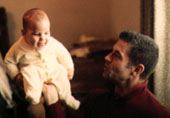 Once in Houston
the family had only five months in their new house before Karl took them to
Enid, Oklahoma and to Vance Air Force base. Karl was required to become a
jet pilot in order to be an Astronaut, and he along with Joe Allen were assigned
to Vance Air Force Base. Both passed with flying colors (Karl holds the
record for the oldest man to complete this 18 month course at the age of 42) and
returned to Houston. Named for the air base on which he was conceived, son
Vance was born on September 1, 1969 in Houston. A habitual workaholic,
Karl filled his 18 year(!) wait for a flight assignment with mission planning,
lecturing, further pursuing his astronomical research, keeping his flight hours
current on T-38s, and an associate professorship at the University of Texas
Astronomy department.
Once in Houston
the family had only five months in their new house before Karl took them to
Enid, Oklahoma and to Vance Air Force base. Karl was required to become a
jet pilot in order to be an Astronaut, and he along with Joe Allen were assigned
to Vance Air Force Base. Both passed with flying colors (Karl holds the
record for the oldest man to complete this 18 month course at the age of 42) and
returned to Houston. Named for the air base on which he was conceived, son
Vance was born on September 1, 1969 in Houston. A habitual workaholic,
Karl filled his 18 year(!) wait for a flight assignment with mission planning,
lecturing, further pursuing his astronomical research, keeping his flight hours
current on T-38s, and an associate professorship at the University of Texas
Astronomy department.
 In the summer of
1985, his long awaited chance came aboard Challenger during STS 51-F, the
19th shuttle mission . The first attempt at liftoff was foiled by an
automatic main engine shut down one second short of launch. As the main
engines had been lit and burned for several seconds already, the pad abort was
rather disconcerting with the spacecraft rocking wildly for several minutes
afterwards. The solid rocket boosters, which were the demise of Challenger
two missions later, were never ignited (they start at liftoff, and can not be
turned off by any means, making a pad abort impossible). Two weeks later,
on July 29, Challenger finally lifted off with Karl aboard. A few minutes
into the flight, one of the main engines automatically shut down due to
excessive overheating. Riding on only two of three main engines, the
command "abort ATO, abort ATO" was given by ground control. This was
immediately misconstrued by the families of the crew as a total mission abort,
and cries of fear and frustration arose. However, it was quickly explained
that "abort ATO" means "abort
to orbit" and the shuttle was merely going to a lower orbit than planned,
and would not be turning around to land at Cape Kennedy or Madrid. Another
engine had threatened to fail later during the ascent (which would have demanded
a landing at Madrid International airport!), but a ground controller saved the
mission by coming to the conclusion that the thermometers must be faulty and
shut them off. Indeed this was the case, and the engines had actually been
fine in all instances. This was also the first and only shuttle mission to
carry Coke and Pepsi drinks along. Both were a dismal failures due to the
zero-g environment and the lack of refrigeration, though floating "Pepsi balls"
did provide a source of entertainment to the crew. After 8 days, the
mission ended a success despite the slight disadvantage the lower orbit brought
to the solar observing experiments in the payload, as other instruments actually
benefited from the lower orbAWme appeared for two years in the Guinness Book of
World Records as the oldest man in space, until Vance Brand, Story Musgrave, and
finally John Glenn, took his place. He still holds the record for the
oldest rookie in space.
In the summer of
1985, his long awaited chance came aboard Challenger during STS 51-F, the
19th shuttle mission . The first attempt at liftoff was foiled by an
automatic main engine shut down one second short of launch. As the main
engines had been lit and burned for several seconds already, the pad abort was
rather disconcerting with the spacecraft rocking wildly for several minutes
afterwards. The solid rocket boosters, which were the demise of Challenger
two missions later, were never ignited (they start at liftoff, and can not be
turned off by any means, making a pad abort impossible). Two weeks later,
on July 29, Challenger finally lifted off with Karl aboard. A few minutes
into the flight, one of the main engines automatically shut down due to
excessive overheating. Riding on only two of three main engines, the
command "abort ATO, abort ATO" was given by ground control. This was
immediately misconstrued by the families of the crew as a total mission abort,
and cries of fear and frustration arose. However, it was quickly explained
that "abort ATO" means "abort
to orbit" and the shuttle was merely going to a lower orbit than planned,
and would not be turning around to land at Cape Kennedy or Madrid. Another
engine had threatened to fail later during the ascent (which would have demanded
a landing at Madrid International airport!), but a ground controller saved the
mission by coming to the conclusion that the thermometers must be faulty and
shut them off. Indeed this was the case, and the engines had actually been
fine in all instances. This was also the first and only shuttle mission to
carry Coke and Pepsi drinks along. Both were a dismal failures due to the
zero-g environment and the lack of refrigeration, though floating "Pepsi balls"
did provide a source of entertainment to the crew. After 8 days, the
mission ended a success despite the slight disadvantage the lower orbit brought
to the solar observing experiments in the payload, as other instruments actually
benefited from the lower orbAWme appeared for two years in the Guinness Book of
World Records as the oldest man in space, until Vance Brand, Story Musgrave, and
finally John Glenn, took his place. He still holds the record for the
oldest rookie in space.
He retired from the astronaut corps in 1986, and took a position as a NASA senior scientist using his previous experience as a satellite tracker to study the growing problem of orbital debris. Noticing an errant statement in a Popular Mechanics magazine, stating that the Air Force was still tracking the glove that can be seen floating out of the cabin during the film of the first American space walk by Ed White, he called the editor to point out that such a small, light object would have de-orbited decades ago at that low altitude. The editor said that is what the Air Force says as part of its tour of its tracking facilities, but that he would call the Air Force to double check. The Air Force put an officer on the case to find out if this was really true, and was eventually referred back to Karl as being the best authority on such things. A retraction was printed a short time later.
 In early 1993, he
was invited to join an expedition to climb Mount Everest, and he naturally
jumped on the chance to catch his second childhood hero, Sir Edmund Hillary. In
mid September, he traveled to Tibet to join a British expedition attempting the
climb of the north face of Everest. During his second day after reaching
advanced base camp (22,000 feet), he started showing symptoms of extreme high
altitude sickness. The capillaries had dilated to such an extent (so as to
expose more of the blood stream to the oxygen-depleted air) that his lungs
filled with blood plasma. A valiant effort was made the other members of
the expedition to save him, but they could not get him off the mountain in
time. He died 12 days short of his 67th birthday at 1 am, October 5th of
High Altitude Pulmonary Edema (HAPE) at 18,000 feet, and was buried nearby above
the Changste Glacier. News of his death did not arrive home until 3.5 days
later. A memorial service was held in his honor on October 16th. He
is survived by his wife, brother, four children, and 4 grandchildren. See
the NASA biography below for more information.
In early 1993, he
was invited to join an expedition to climb Mount Everest, and he naturally
jumped on the chance to catch his second childhood hero, Sir Edmund Hillary. In
mid September, he traveled to Tibet to join a British expedition attempting the
climb of the north face of Everest. During his second day after reaching
advanced base camp (22,000 feet), he started showing symptoms of extreme high
altitude sickness. The capillaries had dilated to such an extent (so as to
expose more of the blood stream to the oxygen-depleted air) that his lungs
filled with blood plasma. A valiant effort was made the other members of
the expedition to save him, but they could not get him off the mountain in
time. He died 12 days short of his 67th birthday at 1 am, October 5th of
High Altitude Pulmonary Edema (HAPE) at 18,000 feet, and was buried nearby above
the Changste Glacier. News of his death did not arrive home until 3.5 days
later. A memorial service was held in his honor on October 16th. He
is survived by his wife, brother, four children, and 4 grandchildren. See
the NASA biography below for more information.
Other Karl G. Henize Related Pages:
Official NASA
biography
STS51-f
mission Page
Words in memory of
Karl 
Henize-1357
The Stingray Nebula
Discovered by Karl Henize